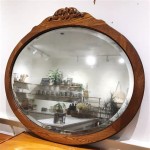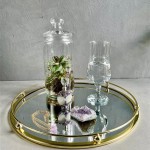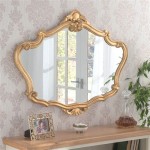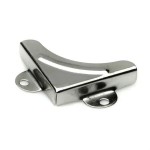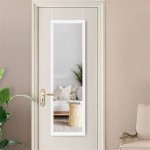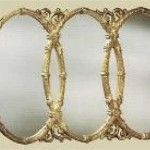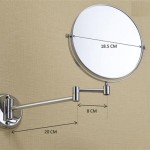Mirrors in Bathrooms
Mirrors are essential components of bathroom design, serving both functional and aesthetic purposes. They facilitate personal grooming tasks, from brushing teeth to applying makeup, and contribute significantly to the overall ambiance and perceived spaciousness of the room.
The selection process for bathroom mirrors involves considering various factors, including size, shape, style, framing, and features. Understanding these aspects allows homeowners to choose mirrors that complement their bathroom's design and meet their specific needs.
Size is a crucial consideration when selecting a bathroom mirror. The mirror should be proportionate to the vanity size and the overall bathroom dimensions. A general rule of thumb is to choose a mirror slightly narrower than the vanity. However, larger mirrors can create a sense of spaciousness in smaller bathrooms, while smaller mirrors can offer a more understated look in larger bathrooms.
Mirror shapes offer a variety of design options. Rectangular mirrors are the most common choice due to their versatility and classic appeal. Round and oval mirrors offer a softer, more contemporary look, while square mirrors can provide a modern, geometric touch. Unconventional shapes, such as arched or hexagonal mirrors, can add a unique and stylish element to the bathroom.
Mirror styles range from traditional to modern and minimalist. Traditional styles often feature ornate frames with decorative carvings or embellishments. Modern mirrors tend to have simpler, cleaner lines and may incorporate materials like chrome or brushed nickel. Frameless mirrors offer a minimalist aesthetic, creating a seamless and contemporary look.
Framing materials significantly impact the mirror's appearance and durability. Wood frames offer a warm and natural aesthetic, while metal frames provide a sleek and modern feel. Plastic frames are a budget-friendly option, and composite materials offer enhanced resistance to moisture and humidity, a critical factor in bathroom environments.
Modern bathroom mirrors often incorporate various features to enhance functionality and convenience. Integrated lighting, such as LED backlighting or illuminated frames, provides enhanced visibility for grooming tasks and adds a touch of elegance to the bathroom. Defoggers prevent mirror condensation, ensuring clear reflection even after a hot shower. Magnifying mirrors offer a closer view for detailed grooming, while smart mirrors integrate technology for displaying information, playing music, or controlling other smart home devices.
Installation methods for bathroom mirrors vary depending on the mirror's size, weight, and the wall's construction. Smaller, lighter mirrors can often be hung using adhesive strips or clips. Larger, heavier mirrors typically require more secure mounting methods, such as wall anchors and screws. Professional installation is recommended for oversized or complex mirror installations to ensure safety and proper mounting.
Maintaining bathroom mirrors involves regular cleaning to remove water spots, toothpaste splatters, and other residues. Using a gentle glass cleaner and a soft cloth is generally sufficient for routine cleaning. Avoid abrasive cleaners, which can scratch the mirror surface. Promptly wiping up spills and splashes can help prevent hard water stains and maintain the mirror's clarity.
Proper ventilation in the bathroom is essential for preventing excessive moisture buildup, which can damage mirror frames and contribute to fogging. Ensuring adequate ventilation through exhaust fans or open windows helps prolong the lifespan of the mirror and maintain its optimal functionality.
The placement of the bathroom mirror should be carefully considered to maximize its effectiveness and enhance the overall bathroom layout. The mirror should be positioned at eye level for comfortable viewing during grooming tasks. Adequate lighting, both natural and artificial, should be provided around the mirror to ensure optimal illumination.
Budgeting for a bathroom mirror involves considering the various factors that influence price, including size, style, framing materials, and features. Simple, frameless mirrors are typically the most affordable option, while larger mirrors with intricate frames and advanced features can be more expensive. Setting a budget beforehand can help narrow down the options and ensure a cost-effective purchase.
Exploring different bathroom mirror options online and in showrooms allows homeowners to compare styles, features, and prices. Reading customer reviews and seeking professional advice can provide valuable insights into the quality and suitability of different mirror options for specific bathroom designs.
Considering the long-term value of a bathroom mirror involves assessing its durability, functionality, and aesthetic appeal. Investing in a high-quality mirror with durable framing and features can ensure long-lasting performance and enhance the overall value of the bathroom.

Custom Bathroom Mirrors Creative Mirror Shower

Why Bathroom Mirrors Are So Important

Modern Bathroom Mirror Trends You Need To Know This 2024
:strip_icc()/Design_CathieHongInteriorsPhoto_ChristyQPhotography-b2290decbe0e4d0b952f280fb7bdc896.jpg?strip=all)
How To Remove A Bathroom Mirror From The Wall

27 Bathroom Mirror Ideas For Every Style Wall Decor

How To Pick And Hang The Perfect Bathroom Mirror Roomhints

Rock Your Reno With These 11 Bathroom Mirror Ideas
:max_bytes(150000):strip_icc()/contemporary-bathroom-5a20b09ae258f8003b6d62a1.jpg?strip=all)
13 Beautiful Mirrored Bathrooms

30 Cool Ideas To Use Big Mirrors In Your Bathroom Digsdigs

4 Benefits Of Bathroom Mirror Glazonoid


